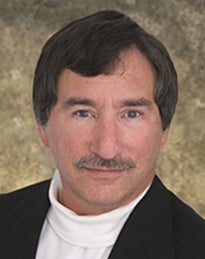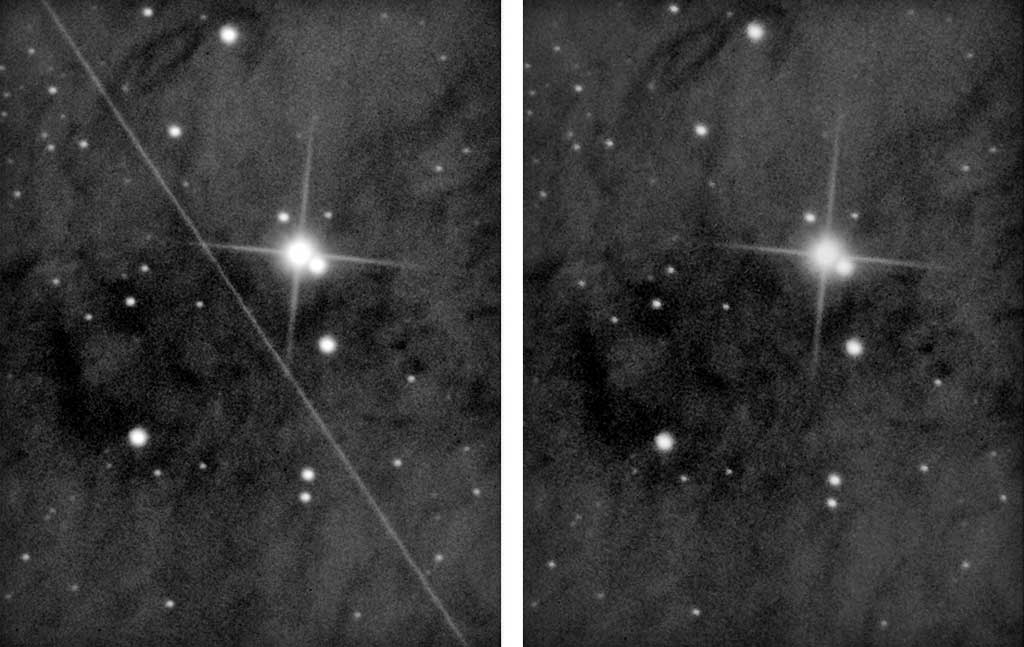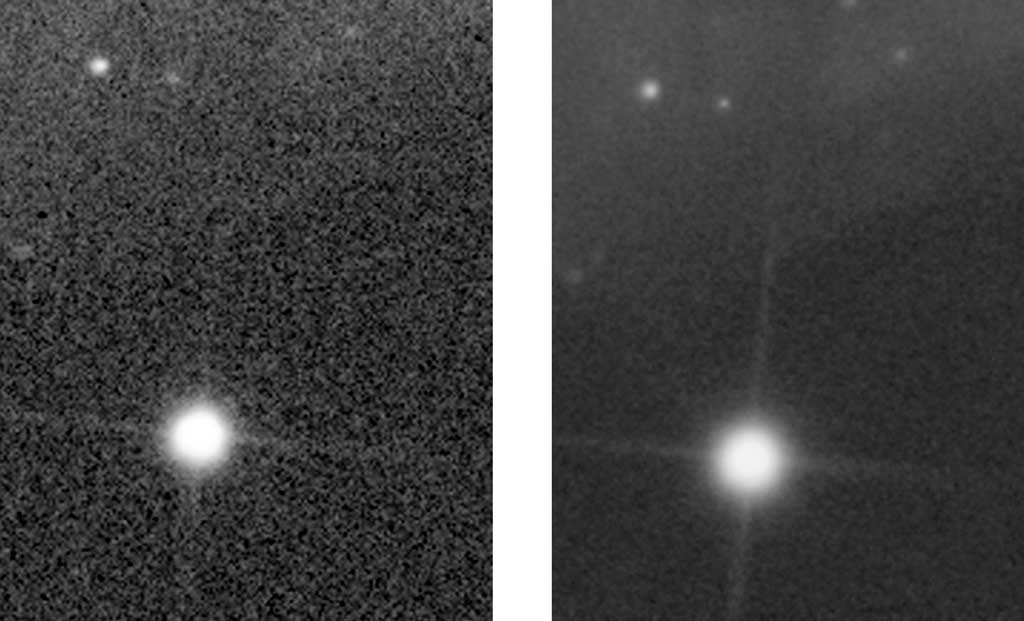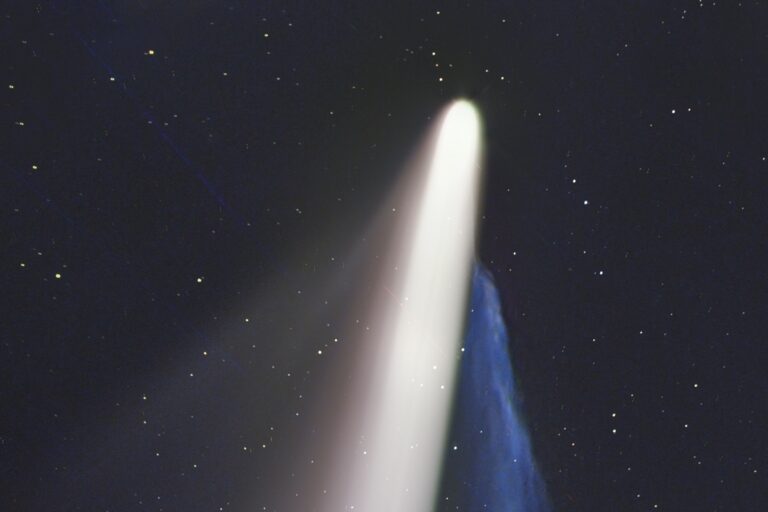But I have found that this is too simplistic. A lot of the time, we didn’t have the best sky to work with or we misjudged exposure times. I used to think that a combination of the longest exposures and the most frames would give the best results. And in a perfect world, that would be true. In real life, however, this almost never happens. The reasons could be many. Some nights had bad seeing, others were cloudy, still others were too windy, etc. It’s a long list! Knowing how outlier rejection (getting rid of all the things that don’t belong in your picture, like cosmic-ray hits) and combining frames (to increase the signal-to-noise ratio) works is really important.
I use two kinds of rejection algorithms: Poisson Sigma Combine and STD Sigma Combine. You usually can find these in image-processing software like CCDStack. Both algorithms take a look at the statistics of your data and reject anything that falls outside parameters you choose. You can adjust the “attack” of this software to suit the degree of outliers in your image, but here is where you’ll notice a subtle difference between the two processes.
The mean (average) of a set of images works hand in hand with outlier rejection in two ways. First, the more frames you shoot, the more you dilute a particular outlier like a satellite trail. Average three frames together, and you will still see the trail; average 20 frames, however, and the satellite trail is now only one-twentieth that of the final image. It’s been “diluted out.” But there is a much more important reason to shoot a larger number of frames, and it has to do with statistics.
The fact is that you can combine up to 25 frames before the asymptotic noise boundary (the noise that no amount of combining will eliminate) begins to impinge on the “square root/signal-to-noise formula.” So, it is wiser to shoot a lot of shorter exposures and combine enough frames to allow statistics and the law of averages to perform their magic on your images.
It’s truly all in the numbers.












